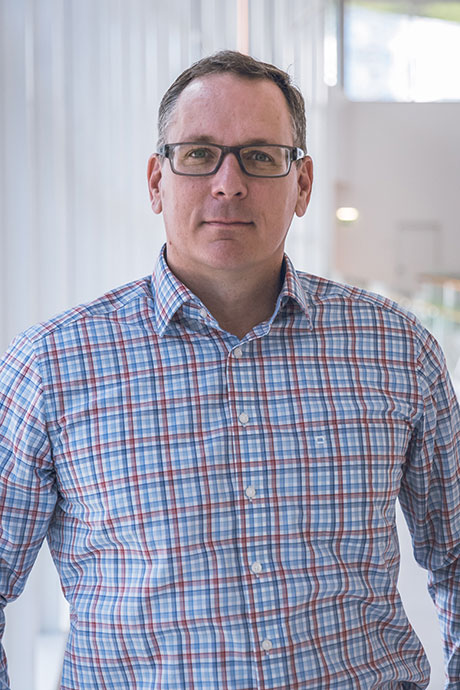

- Home
- About Us
-
Employment
- Technical Work
- USSP
- Reference Documents
-
Travel
Meet the People of IAEA Safeguards
The International Atomic Energy Agency has a world-class, diverse and multi-disciplinary workforce. With more than 2,500 staff working in a wide range of nuclear and related disciplines, it draws on their expertise to ensure the peaceful use of nuclear material and application of nuclear techniques for sustainable development. Here's a profile of one the safeguards professionals hired through the the International Safeguards Project Office.
Interview with Marc Taylor
How did you end up at the IAEA? What were you doing before you joined the IAEA?
My wife took a job at the Comprehensive Nuclear-Test-Ban Treaty Organization, so I applied for a number of positions at the IAEA. While we're in Vienna, I'm on a leave of absence from Pacific Northwest National Laboratory, where I was a senior scientist and project manager for the Risk and Decision Sciences group. I managed risk analysis projects for critical infrastructure assets for the U.S. Department of Homeland Security and the U.S. Department of Defense. In addition, I provided subject-matter expertise to both agencies for countering weapons-of-mass-destruction threats and developing detection and deterrence strategies.
What have you learned about yourself while working at this capacity?
I've learned a good deal about needing to improve my ability to communicate. What is clear in my head is oftentimes not clear to others, especially people who are not native English speakers.
How will working at the IAEA enhance your career?
At the IAEA, I'm working within a large organization to improve physical security measures and implement training requirements. This experience will be useful almost everywhere.
What is the most interesting thing that has happened to you since you started working at the IAEA?
Having work meetings in the bar has been a novel experience. Meeting in informal settings allows for the lowering of organizational and social barriers, sometimes making it easier to find acceptable solutions. I've also found that as I develop better personal relationships with other IAEA staff members, trust between all parties increases, enabling a better flow of ideas.
What is it like living and working in Vienna?
Vienna is a wonderful city, and being able to share the experience with my family has been life changing. Its history goes back 1,000 years, and the number of beautiful places to visit within the metro area is impressive. Opportunities to attend cultural events such as the opera, concerts, and museums are also numerous and outstanding. Public transportation is excellent and very cheap in comparison to other cities. Vienna is also centrally located, so visiting other interesting locations in Europe and around the world is very easy. I would also add that the cost of living in Vienna is very reasonable.
How is working abroad at the IAEA different than working in the United States?
The IAEA is similar to U.S. national labs and government agencies in that the IAEA functions as both a government organization with a number of different, competing technical priorities and responsibilities, as well as an internal bureaucracy. This dynamic gives the IAEA a similar feel to a national lab especially. The key difference is that the IAEA is directed and staffed by an international organization.
What advice would you give to those who are seeking employment at the IAEA?
Work closely with the U.S. Support Program to find opportunities and understand the nuances of the application process and how to prepare your resume. These nuances are critical to maximizing your chances of success.

Marc Taylor
Cost Free Expert
Nuclear Security Specialist
Office of Safeguards Analytical Services


